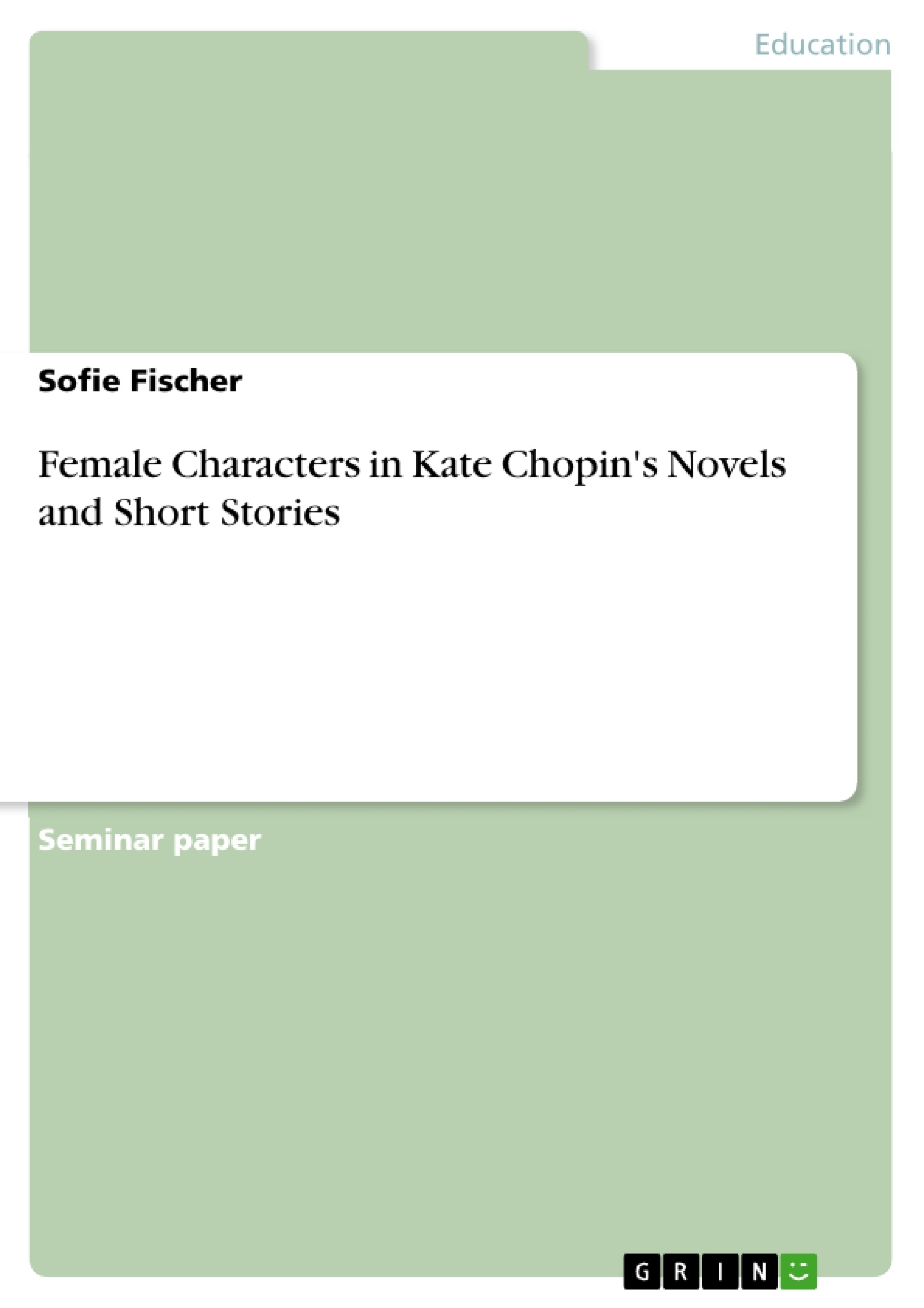This term paper is about female characters in Kate Chopin´s work. Kate Chopin was a novelist and short story writer who was born in St. Louis Missouri and lived in Louisiana in the 19th century. Her work shows an interesting and intense point of view on female characters at that period of time. Her stories contain descriptions of feelings, inner beliefs and desires of women. The stories broach issues of marriage, motherhood as well as issues of the society in the 19th century and the role of females at that time. The stories are also marked by the topics identity, independence as well as freedom, which embody important features considering the analysis of the stories and their female characters. This leads to the thesis, that the female (main) characters in Kate Chopin´s novels and short stories share characteristic features and create a pattern in Chopin´s work. To properly work on the thesis, the term paper will be based on the analysis and comparison of primary literature by Kate Chopin, while secondary literature will support the statements and analysis. The chosen secondary literature consists mostly of articles, that broach the issues of Chopin´s work, her female characters as well as themes such as identity, society, independence as well as the role of women at that time.
Table of Contents
- Introduction
- Main part
- Main part - Female characters in The Awakening
- Main part - Female characters in Chopin's short stories "The Story of an Hour", "The Storm" and "A Respectable Woman"
- Conclusion
Objectives and Key Themes
This term paper analyzes the portrayal of female characters in Kate Chopin's novels and short stories, exploring their experiences, desires, and challenges within the context of 19th-century society. The paper aims to identify recurring patterns and themes in Chopin's work, shedding light on the author's perspective on women's roles and identities.
- The role of women in 19th-century society
- The limitations imposed on women by societal expectations and marital norms
- The complexities of female desire and identity
- Themes of independence, freedom, and self-discovery
- The exploration of female relationships and the influence of societal pressures on these connections
Chapter Summaries
The paper begins by introducing the central theme of female characters in Kate Chopin's work, highlighting the author's unique perspective on women's lives during the 19th century. It then delves into an analysis of Edna Pontellier, Mademoiselle Reisz, and Adéle Ratignole, the main female characters in Chopin's novel The Awakening. The analysis explores their individual struggles with societal expectations, marital roles, and the pursuit of personal fulfillment. The paper examines how these characters embody different facets of female identity and experience.
The paper further analyzes three of Chopin's short stories: "The Story of an Hour," "The Storm," and "A Respectable Woman," focusing on the main female characters, Calixta, Mrs. Baroda, and Louisa Mallard. The analysis explores their desires, passions, and motivations within the context of their lives and the societal constraints they face. The paper aims to identify similarities and differences between these characters and those from The Awakening, highlighting how Chopin portrays female characters across different genres and narrative styles.
Keywords
The key terms and concepts explored in this paper include: female characters, Kate Chopin, 19th-century society, societal expectations, marital norms, female desire, identity, independence, freedom, self-discovery, female relationships, societal pressures, and literary analysis.
- Quote paper
- Sofie Fischer (Author), 2020, Female Characters in Kate Chopin's Novels and Short Stories, Munich, GRIN Verlag, https://www.grin.com/document/975144



